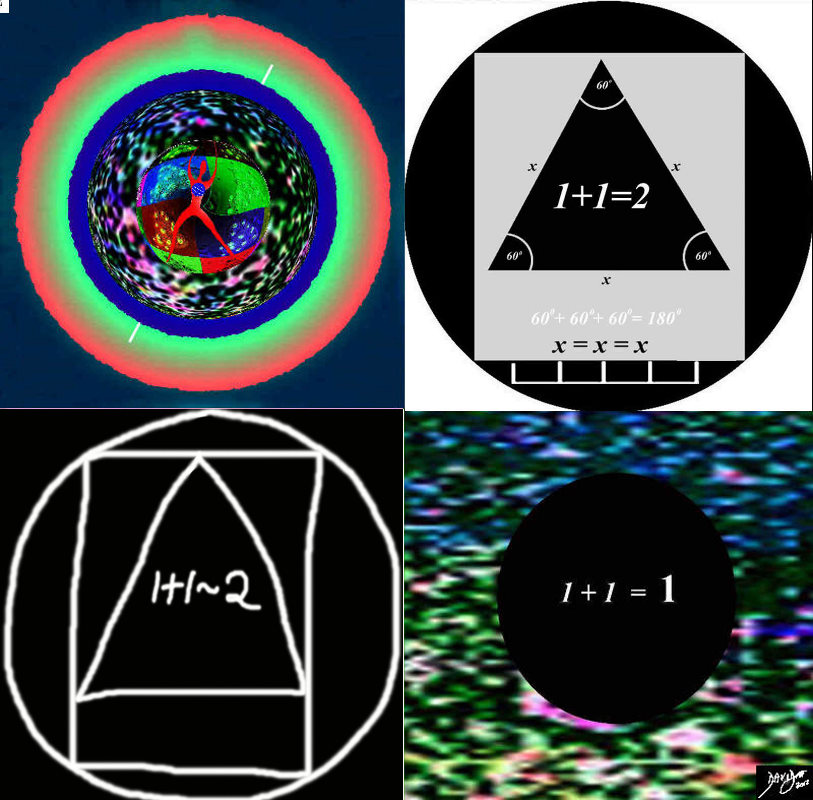1+1 ≈ 2 The Art of the Science

The 1 + 1 ~ 2 is the equation we use in our practical world. When we ask for for a spoon of sugar in a cup of tea, we do not expect an exact measure. Apples may be bought by the bag (1 + 1 ~ 2 method) If they are purchased by the pound ( it is the 1 +1 = 2 method.
The third equation is not as straight forward and reflects the human input into the field. The component numbers could be numeric, measurable, logical, and accurate, but human intuition plays a key role in integrating the information and reaching a conclusion.
The 1 + 1 ~ 2 is the equation we use in our practical world. When we ask for for a spoon of sugar in a cup of tea, we do not expect an exact measure. Apples may be bought by the bag (1 + 1 ~ 2 method) or by the pound (1 =1 = 2 method).
Since science and biology is complex they have to be tackled one piece at a time. The human body has so many moving parts that it requires initial evaluation of each part in isolation, and then an integrated evaluation of the whole. While computers and technology may succeed in the quantitative evaluation by defining measurements of individual structures, they cannot comprehend the whole in the way that the practiced observer, be it architect, lawyer, teacher, biologist or the physician can. The art of intuitively and almost instantaneously making an early diagnosis in the patient, whose cough is hoarse, whose skin is wrinkled from the loss of elasticity from smoking, whose fingers are now clubbed, whose left pupil seems to be constricted, a small new tremor,whose demeanour of body language has changed, whose handshake is limp, is within the realm of the experienced physician. In an instant the practiced professional is able to take it all in and synthesise the information. In such a patient, a left apical lung cancer (of Pancoast) with metastatic disease to the recurrent laryngeal nerve and left side of the brain needs to be considered, even before a word is spoken between patient and doctor. The art of medicine is the “geshtalt” or intuition. The equation 1+1 ≈ 2 is applied to the art of biology and medicine in this instance. The clinician does not need to measure the quantitative changes in the voice, nor the size of the pupils or wrinkles nor the elasticity of the skin. Subjective and perceptive coordinated evaluation of the whole is all that is necessary to reach a diagnostic direction. There is no substitute in the 1+1=2 technical world for the immeasurable “geshtalt” and it is this equation that reflects the close to accurate approximation. The universal descriptors that the clinician had unconsciously applied in the analysis of the structures in that moment of brief interchange included the size shape position and character of each of the structures and functions mentioned. Things had changed in the patient since the previous visit which the doctor was able to notice, and a fifth element in the descriptors includes the effects of time.
The Equations We Live By

1+1 ≈ 2 The Art of the Science
This diagram shows the 3 major equations
Top left is an artistic rendering showing the recurring consequence as addition advances from the proton to the universe. The second shows an equation that reflects fundamental arithmetic known to everybody. The component numbers are numeric, measurable, logical, accurate (usually) and reproducible. For the lay person its the numbers we come across in day to day living, when dealing with addition, subtraction division and multiplication. The most common human example is the in the purchase of goods or food, where a particular product has a a price, and the transaction requires an exact amount of money in exchange
The third equation is not as straight forward and reflects the human input into the field. The component numbers could be numeric, measurable, logical, and accurate, but human intuition plays a key role in integrating the information and reaching a conclusion.
The 1 + 1 ~ 2 is the equation we use in our practical world. When we ask for for a spoon of sugar in a cup of tea, we do not expect an exact measure. Apples may be bought by the bag (1 + 1 ~ 2 method) If they are purchased by the pound ( it is the 1 +1 = 2 method.
The equation 1 + 1 = 1 does not make intuitive sense, though it communicates a crucial tenet of The Common Vein. The component numbers in the left side of the equation, could represent the letters of the alphabet, a musical note, a brushstroke of a painting, the components of an equation, or the atom of the universe. It is the equation that is used most commonly in The Common Vein, and is applicable in many situations of life. The end result (right side of the equation) provides an illogical, unexpected, surprising and sometimes even magical result. It implies that whole is a unified bigger than the sum of its parts.
Ashley Davidoff MD
